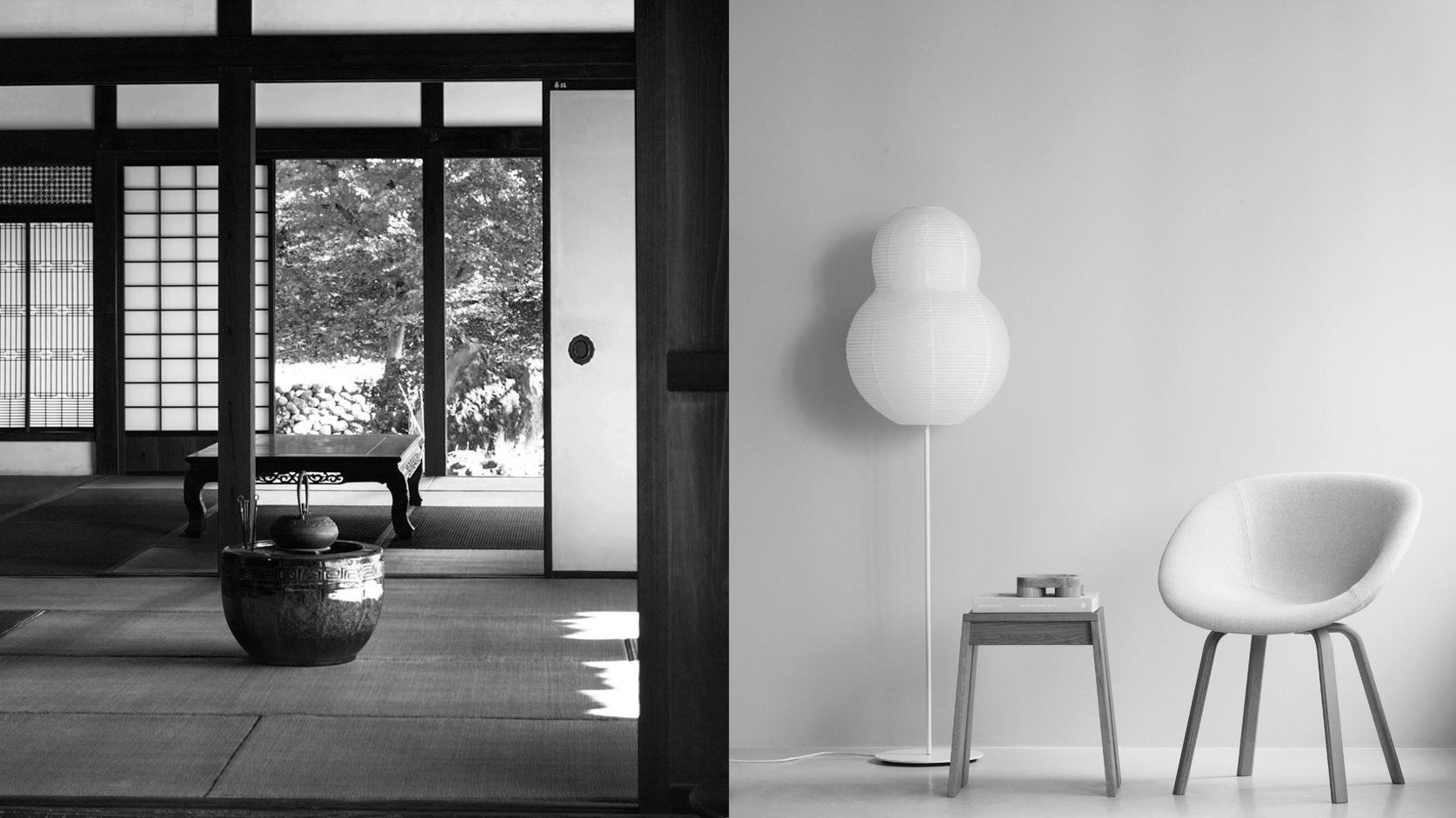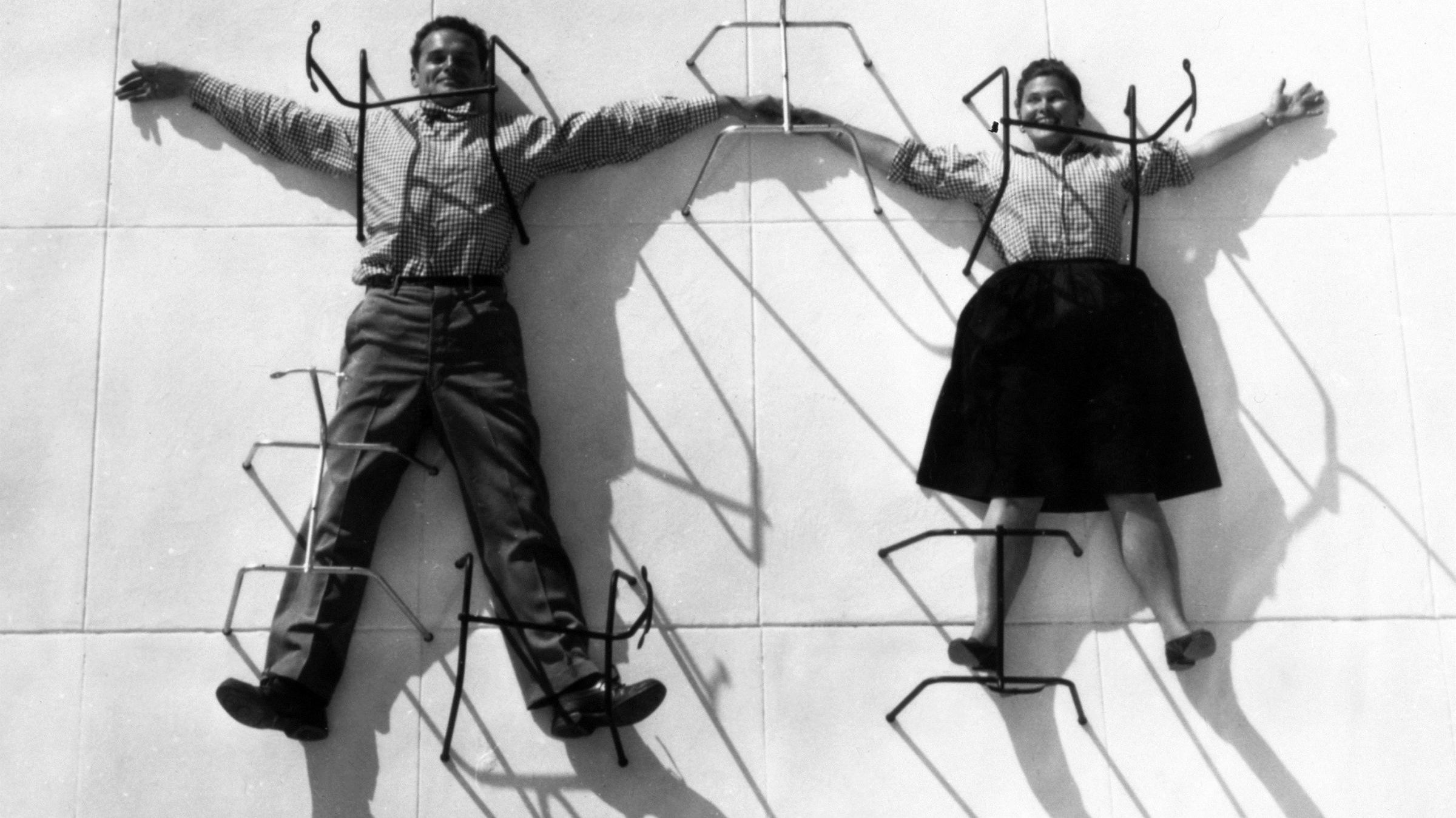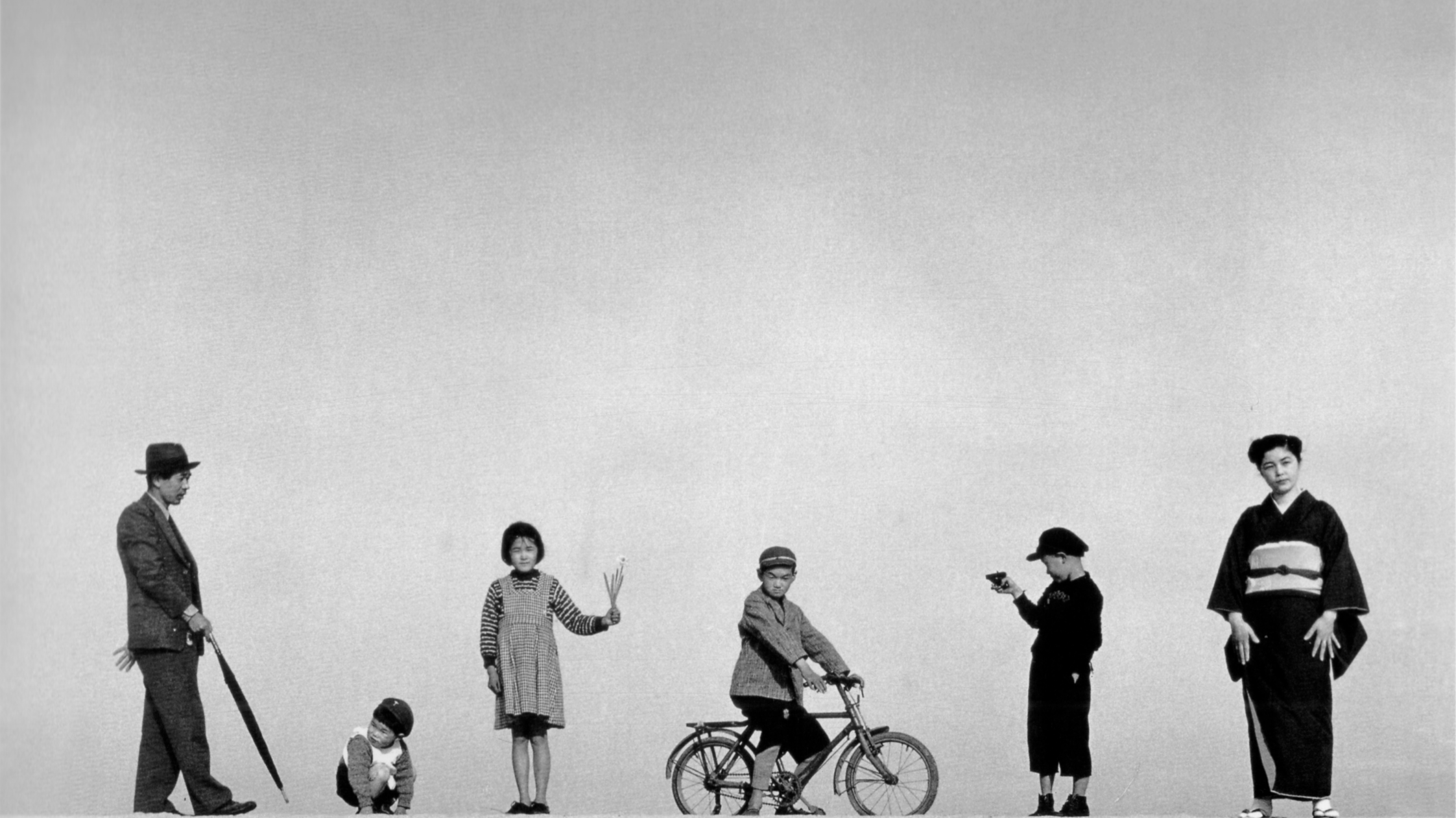Recently, we've noticed a design style gaining attention on social media that dates back to the 1940s through the 1960s. Characterized by clean lines, organic forms, and a harmonious integration with nature, this style is known as Mid-Century Modern. If you’re drawn to these design elements, you'll definitely want to learn more about the Mid-Century Modern design style.
An early advertisement for the Eames lounge chair and ottoman, embodying the Mid-Century Modern design style.
(Mid-Century Modern Design Style: Key Characteristics and Famous Architects - dans le gris)
What is the Mid-Century Modern Design Style?
The term "Mid-Century Modern" (MCM) refers to a design movement that gained prominence in the United States during the middle of the twentieth century. Coined in the 1980s by author Cara Greenberg in her book Mid-Century Modern: Furniture of the 1950s, it is characterized by clean lines, organic forms, and a harmonious integration with nature. Influences include the German Bauhaus school and the Dutch De Stijl movement, both advocating the marriage of form and function.
Compared to the Modern design style, the Mid-Century Modern design style favors bold, vibrant colors like mustard yellow and avocado green, often contrasted with neutral tones. Designers such as Charles and Ray Eames, Alvar Aalto, Eileen Gray, George Nelson, Arne Jacobsen, Isamu Noguchi, Cara Greenberg, and Eero Saarinen became famous for their iconic works during this era.
(Mid-Century Modern Design Style: Key Characteristics and Famous Architects - dans le gris)
The Rise of the Mid-Century Modern Design Style
Mid-Century Modern design style emerged in the United States during the mid-20th century, roughly spanning from the 1940s to the 1960s. This period saw a significant influx of German designers who emigrated to America after World War II, bringing with them innovative design ideas. Designers embraced new technologies and materials developed during the war, incorporating mass production techniques and frequently using materials such as fiberglass, bent plywood, aluminum, steel, foam, and plastic laminates.

The SAS Royal Hotel in Copenhagen is a prime example of Mid-Century Modern design, created by the renowned Danish architect Arne Jacobsen. Photo: Aage Strüwing © Jørgen Strüwing.
By the mid to late 1950s, the Mid-Century Modern design style became widely popular in American interiors. Advances in mass production allowed for the creation of furniture in large quantities, using a diverse range of materials and vibrant colors. This design style remained prominent throughout the 1960s and 1970s. However, by the 1980s, new design philosophies, such as the Memphis Design School, began to gain popularity.

Television shows like Mad Men vividly depict the era, and the frequent use of Mid-Century Modern furniture in 1990s advertisements has also contributed to its resurgence in popularity.
The Mid-Century Modern design philosophy is part of a broader artistic movement that encompasses architecture, graphic design, and product development. Although it peaked in the post-war period of the 1950s and ’60s, the Mid-Century Modern design style has recently experienced a resurgence in popularity. This revival has been fueled in part by television shows like Mad Men (2007), which vividly depict the era, and by the frequent use of Mid-Century Modern design style furniture in 1990s advertisements. Additionally, brands like Knoll and Herman Miller, renowned for their iconic Mid-Century Modern design style, have played a significant role in this revival.
In northern Europe, Scandinavian designers were influenced by the broader Mid-Century Modern design movement, but they developed a distinctly Scandinavian style. This style is known for its emphasis on handcrafted furniture and the use of natural materials like wood and leather. While the Mid-Century Modern design style defined a specific period, its principles and aesthetics continue to influence contemporary interiors and architecture today.
(Mid-Century Modern Design Style: Key Characteristics and Famous Architects - dans le gris)
The Key Characteristics of the Mid-Century Modern Design Style
Mid-Century Modern design style stands out for its unique and defining characteristics that set it apart from other design movements. Originating in the mid-20th century, this design style remains relevant today. Here are the key characteristics that define this iconic style and help you gain a deeper understanding:
1. Clean Lines and Simplicity
Mid-Century Modern design style is characterized by clean, straight lines and simple forms, drawing its roots from the International and Bauhaus movements. The emphasis is on functionality and practicality, with minimal ornamentation. Chairs and tables often feature simple materials supported by wooden or metal pin-style legs. This simplicity creates a streamlined aesthetic that remains timeless.
For instance, the Wishbone Chair, designed by Hans J. Wegner for Carl Hansen & Son and debuting in 1949, remains a classic to this day. Its Y-shaped backrest and clean, straight lines exemplify the style’s minimalist design, highlighting both functional beauty and craftsmanship.
Hans J. Wegner sitting on his own design, the Wishbone Chair, exemplifies the Mid-Century Modern emphasis on blending functionality with aesthetic appeal.
2. Organic Forms
Designers of the Mid-Century Modern era were inspired by the organic forms found in nature. Influences from earlier organic architecture, such as the work of Frank Lloyd Wright, played a significant role in shaping the Mid-Century Modern movement. This inspiration led to the incorporation of smooth, flowing shapes and natural lines in their designs, creating a sense of harmony and balance. Furniture and architecture from this period often feature smooth, flowing lines that mimic natural shapes, alongside structured, geometric patterns. For more information about organic design, please check our previous article, "Organic Design: Drawing Inspiration from Nature."
The Tulip Chair, designed by architect Eero Saarinen in the late 1950s, is an iconic example of organic forms in Mid-Century Modern design. Its smooth, petal-like base and elegant single pedestal reflect Saarinen’s goal of creating designs that eliminate clutter and emphasize the relationship between form and function. The chair’s fluid shapes evoke a sense of natural grace. Saarinen designed the chair's one-piece base to replace the visual clutter of traditional furniture. In his words, "The undercarriage of chairs and tables in a typical interior makes an ugly, confusing, unrestful world. I wanted to clear up the slum of legs. I wanted to make the chair all one thing again."
Tulip Chair advertisement for Knoll, designed by Herbert Matter in 1957.
3. Harmonious Connection with Nature
Mid-Century Modern design is characterized by its emphasis on blending man-made structures with the natural environment. This fusion is evident in the architecture through the use of large windows and open floor plans, creating a seamless transition between indoor and outdoor spaces. In furniture design, materials such as walnut, teak, oak, and rosewood are favored for their natural beauty and warmth. Often left with a natural finish to highlight their grain and texture, these materials enhance the style’s connection to nature and underscore the craftsmanship inherent in Mid-Century Modern design.
4. Distinctive Color Palette
In the historical context of the post-World War II era, the Mid-Century Modern design style embodied a sense of optimism and progress. Designers of the time often favored bold and vibrant colors such as mustard yellow, avocado green, burnt orange, and teal. Advances in dyeing and fabric technology allowed for a wider range of vibrant and diverse color options in furniture and decor.
In addition to these vivid colors, the Mid-Century Modern design style also incorporates warm, earthy tones like terracotta, ochre, and brown. These colors provide a rich, organic backdrop that evokes warmth and a connection to nature, balancing the more vibrant hues.
Unlike the more subdued Modern style, Mid-Century Modern design embraces a vibrant and rich color scheme. This is often achieved through bold color blocking and geometric patterns that create visual interest and dynamic interiors.
(Mid-Century Modern Design Style: Key Characteristics and Famous Architects - dans le gris)
Famous Architects and Designers of the Mid-Century Modern Design Style
The Mid-Century Modern era was shaped by a group of visionary architects and designers whose work has had a lasting impact on today’s design. Their commitment to clean lines, organic forms, and a harmonious connection with nature set new standards and defined the aesthetic of the mid-20th century. Below is a list of some of the most famous architects and designers from the Mid-Century Modern movement that you should know about:
1. Charles and Ray Eames

Charles and Ray Eames were pivotal in bringing the principles of Mid-Century Modern design to a wider audience.
Charles and Ray Eames are among the most influential figures in twentieth-century design. Their work spans furniture design, filmmaking, photography, and exhibition design, and was pivotal in bringing the principles of Mid-Century Modern design to a wider audience.
Charles and Ray Eames were pioneers in experimenting with new materials and manufacturing techniques, being among the first to use molded plywood, fiberglass, and aluminum in their furniture designs. This innovative approach not only enabled them to create elegant, functional pieces but also made high-quality, well-designed furniture accessible to the general public.

Eames House (also known as Case Study House No. 8) living room is a quintessential example of Mid-Century Modern design. Designed by Charles and Ray Eames in 1949. Photograph: Antonia Mulas/Eames Office.
2. Gio Ponti

Gio Ponti's Superleggera Chair exemplifies the Mid-Century Modern focus on combining form and function while embracing new materials and manufacturing techniques.
Gio Ponti was a prominent Italian architect, industrial designer, furniture designer, artist, and publisher. In 1928, he founded "Domus" magazine, which focuses on architecture, art, and design, and continues to be published today.
One of his most celebrated designs is the Superleggera (Super Light) chair, also known as Model 699. Named for its Milanese architect's ambition to create the lightest chair possible, the project took nearly a decade to complete. The Superleggera exemplifies Ponti's belief that design should be both beautiful and functional. This philosophy aligned with the Mid-Century Modern movement’s emphasis on simplicity and practicality. Ponti’s work remains a significant reference point for understanding and appreciating mid-20th-century design aesthetics.
3. Eero Saarinen

Although not furniture, the Gateway Arch in St. Louis, designed by Eero Saarinen, is an iconic example of Mid-Century Modern architecture. It showcases his sculptural approach to design. Photo Credit: Yale University Library, Manuscripts and Archives; © St. Louis Post-Dispatch.
Eero Saarinen was a Finnish-American architect and a pivotal figure in the Mid-Century Modern movement, renowned for his innovative approach to architecture and furniture design using modern materials and construction techniques. His use of molded fiberglass, concrete, and aluminum in furniture and architecture reflects the Mid-Century Modern movement's embrace of new technologies and materials.
Saarinen designed many of the most recognizable pieces for Knoll, a prominent American furniture company known for collaborating with renowned architects and designers. His notable designs include the Tulip chairs and tables, the Womb chair, and the 70 series seating collection. Known for his obsession with revision, Saarinen took a sculptural approach to furniture design, building hundreds of models and full-scale mock-ups to achieve the perfect curve, find the right line, and derive the most pleasing proportions. His designs, which employed modern materials in graceful, organic shapes, helped define the Mid-Century Modern design style.
4. Alvar Aalto

Alvar Aalto is one of the famous architects associated with the Mid-Century Modern design style.
Alvar Aalto was a Finnish architect and designer, often called the "Father of Modernism" in the Scandinavian countries. He developed techniques for bending wood that allowed for the creation of organic shapes and forms, which became a hallmark of his furniture designs. One of his best-known pieces, the Paimio Chair, is named after the town in southwestern Finland for which he designed a tuberculosis sanatorium and all its furnishings. Admired for both its sculptural beauty and comfort, the Paimio Chair pushed the boundaries of plywood manufacturing in the early 1930s. This piece became an iconic example of the Mid-Century Modern design style, showcasing Aalto's innovative use of bentwood and his commitment to creating beautiful, functional objects.

The Paimio Chair is an iconic example of the Mid-Century Modern design style.
(Mid-Century Modern Design Style: Key Characteristics and Famous Architects - dans le gris)
Recommended Books on the Mid-Century Modern Design Style
Before we conclude our article on Mid-Century Modern design style, we hope you’ve gained a deeper understanding of the subject. If you’re interested in learning more, we’ve curated a collection of recommended books below.
Mid-Century Modern Furniture

Mid-Century Modern Furniture offers an insightful look into one of the most dynamic eras in design history, spanning from the late 1930s to the early 1970s. This period saw a surge in innovative furniture design, driven by postwar optimism and advancements in manufacturing and materials.
The book captures the essence of Mid-Century Modern design with vibrant photography and detailed profiles of hundreds of iconic and rare pieces. It serves as an essential resource for design enthusiasts, collectors, and anyone interested in the formal beauty and craftsmanship of Mid-Century Modern furniture. (Shop Now)
Charles & Ray Eames: 1907-1978, 1912-1988: Pioneers of Mid-century Modernism

Charles and Ray Eames, the iconic creative duo, revolutionized American design. Best known for their groundbreaking furniture, they also excelled in architecture, textile design, photography, and film. Their work set a new standard for modernity, blending craft with design and utilizing modern materials like plywood and plastics.
The Eames Lounge Chair Wood, crafted with molded plywood technology, became a 20th-century classic. Their innovative contributions to the Case Study Houses project showcased inventive uses of industrial materials and introduced adaptable, multipurpose floor plans, leaving a lasting mark on postwar modern architecture. (Shop Now)
Mid-Century Modern Graphic Design

Mid-Century Modern Graphic Design by Theo Inglis is a visual and comprehensive guide to one of the most vibrant and enduring graphic styles of the 20th century. This book explores the bold, innovative graphics that defined the post-war era, capturing a spirit of energy and progress that still captivates today.
The book showcases a wide range of stunning works, from book covers and record sleeves to posters and advertising. It features dynamic color palettes, experimental typography, and lively prints that embody the period's creative buzz. (Shop Now)
Atlas of Mid-Century Modern Houses

Atlas of Mid-Century Modern Houses is the most comprehensive survey of global Mid-Century Modern architecture ever published. This stunning book features over 400 remarkable homes from 40 countries, designed by more than 290 of the world’s top architects.
From iconic names like Marcel Breuer, Le Corbusier, and Oscar Niemeyer to lesser-known gems in Australia, Africa, and Asia, this collection captures the essence of Mid-Century Modern design. Showcasing homes built between the 1940s and 1960s, it highlights the era’s unique style and enduring appeal. (Shop Now)
(Mid-Century Modern Design Style: Key Characteristics and Famous Architects - dans le gris)
Read More Design Articles:
• Japandi Style: A Contemporary Fusion of Japanese and Scandinavian Design
• Art Deco: A Complete Guide to Roaring Twenties Decorative Style
• Organic Design: Drawing Inspiration from Nature
• Zaha Hadid's Architectural Designs of Mathematical Beauty
(Mid-Century Modern Design Style: Key Characteristics and Famous Architects - dans le gris)
About Us
Dans Le Gris is a brand that started with everyday jewelry; each handmade piece is designed and crafted in Taiwan. We deeply value every detail, dedicating ourselves to creating enduring pieces through collaboration with experienced craftsmen.
In our journal, we provide irregular updates featuring articles about art, culture, and design. We aspire to furnish our readers with profound insights and inspiration across a broad array of creative subjects. From the daily inspirations found in art and design to the timeless beauty of traditional craftsmanship and philosophy, our curated content encompasses diverse aspects of life. We hope you enjoy our content, and thank you for being here.






